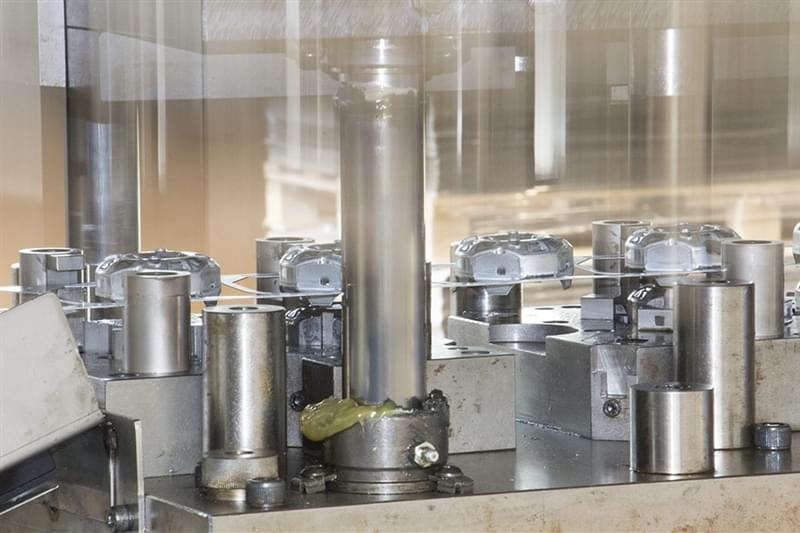Metal stamping, a subset of metalworking, involves the use of sheets of metal to generate a wide range of components and products. This technique has a wide range of potential applications, and aluminium is only one of them. Aluminium’s malleability and strength make it a popular material for the manufacture of components across markets. This includes, but is not limited to, the medical, aerospace, marine, automotive, and electronic goods industries.
Aluminium metal stamping is a broad term that refers to several different processes that may be used to shape the metal into a wide range of products, all of which can be tailored to meet the specific needs of individual customers.
Technique for Stamping Aluminium Metal
When aluminium is stamped, it undergoes several transformations that allow it to be formed into unique components to meet the specific needs of each customer. It is possible to stamp aluminium in different ways:
Blanking is the process of utilizing a die to cut bits of work out of a sheet of aluminium. The resulting blanks are free of debris and ready for further processing in a stamping press or other machinery.
Using a punch and die, notches, slots, or holes are carved out of the component. Perforating is another name for piercing. When compared to drilling, the resulting tolerances from piercing are more accurate, resulting in cleaner cuts. Piercing is also a more effective cutting process than laser cutting.
Components are drawn using tensile force to achieve the desired shapes and wall thicknesses throughout the drawing process. For this purpose, the blanks are stretched out over a die and reshaped into a different form. It has several applications in electrical parts manufacturing.
In the context of shaping or forming voids, the term “formation�? ” is all-encompassing, referring to the techniques and processes used in doing so.
Benefits of Metal Stamping
Aluminium, despite its relative softness, is a workable metal. Therefore, when it comes to metal stamping by stamping companies, aluminium is a great option. Aluminium does not burn and, rather, becomes stronger as the temperature drops. Using aluminium in the stamping process also provides the following benefits:
Its strength-to-weight ratio is incredible, and it can be further increased by alloying with other metals. The metal has a remarkable lightness proportionate to its strength.
Due to its low melting point, aluminium may be easily shaped at any stage of the design and manufacturing process. The pharmaceutical, consumer electronics, battery, decorative packaging, beverage container, and energy storage industries may all benefit from its unique set of properties.
Protection against Rust and Corrosion: Aluminium resists corrosion from water and most chemicals because of its naturally occurring oxide coating.
The recycling process does not damage aluminium, making it an exceptional recyclable material.
Because of its high reflectivity to both light and heat, aluminium is a great material for use in solar energy applications.
Aluminium Alloys Used in Metal Stamping
When aluminium is used in manufacturing, it is seldom used in its purest form. Instead, it is usually alloyed with other metals to increase its properties and performance. Alloys are classified into one of many different four-digit categories based on the primary element(s) used to create them. The following types of aluminium alloys are often used in metal stamping:
For 1100 alloys, the minimum aluminium content is 99%. Its formability, ductility, and workability make it a good choice for jobs that need complex forming procedures. An electrical and thermal conductivity of 1100 is the limit.
Most often, aluminium alloy 3003 is used. With the addition of manganese, the material’s tensile strength is improved. Most often, it is used for drawing, but it is also put to use in manufacturing gas tanks, spinning, and working with sheet metal stamping. It is also resistant to corrosion and cannot be heat treated.
In terms of strength, non-heat-treatable alloy grade 5052 is the strongest available. The alloy’s high resistance to corrosion from saltwater makes it a good fit for marine environments. Alloys in the 5052 series may be used to make complicated structures.
When it comes to heat treatment, 6061 is the most flexible alloy on the market. This alloy has excellent mechanical properties and is resistant to corrosion.
Conclusion
Alloying materials like magnesium, iron, and copper are often utilized in aluminium metal stamping. Due to its excellent strength-to-weight ratio, conductivity, appearance, and other properties, aluminium is typically the ideal material for stamping.


